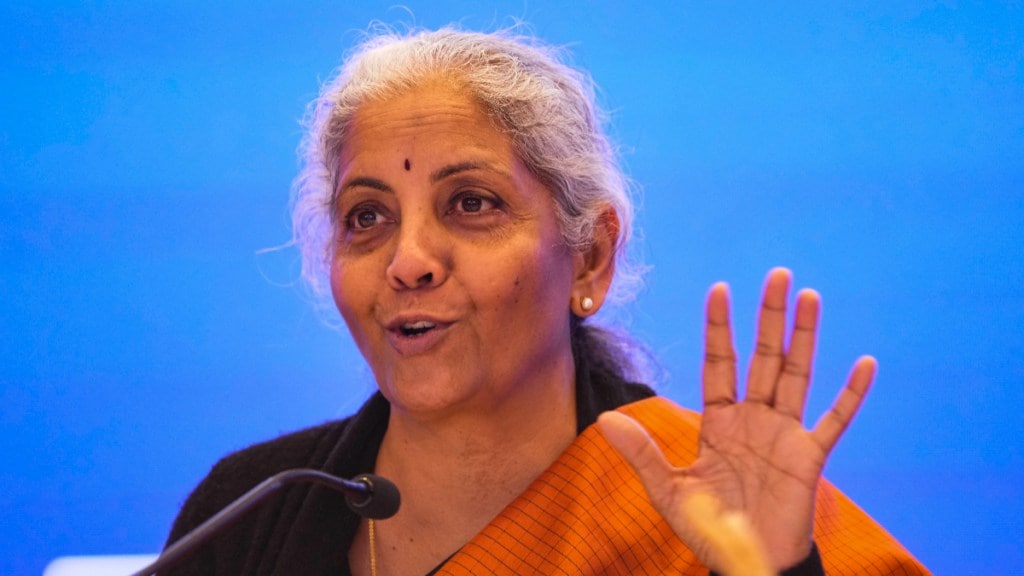The Budget for 2023-24 is “pro-poor and growth-oriented” with a continued thrust on capital expenditure, without compromising on fiscal prudence, finance minister Nirmala Sitharaman said on Friday. The Budget, she said, focuses on the middle class, employment generation, MSMEs, farm sector, rural population, health and green growth, she said.
“The Budget astutely balances the requirement for India’s development imperatives within the limits of fiscal prudence,” Sitharaman said, replying to the general discussion on the Budget in the Lok Sabha. She said the government was committed to the glide path of bringing down the fiscal deficit to 4.5% of GDP by FY26.
After the pandemic-induced contraction of the economy in FY21, the Centre has adopted the capital expenditure route to revive the economy, given the high multiplier effect of such spending.
Speaking about the price scenario, Sitharaman said retail inflation has come down below the upper tolerance band (6%) of the Reserve Bank of India due to various measures taken by the government. Consumer price index (CPI)-based inflation has come down from a high of 7.8% in April 2022 to 5.72% in December.
Refuting the Opposition’s allegations that food and fertiliser subsidies have been cut for the next financial year, she said food subsidy has almost doubled to Rs 1.97 trillion for FY24 (from the pre-pandemic level of Rs 1 trillion). For fertiliser subsidy, allocations have been raised to Rs 2.25 trillion for the current fiscal, from the Budget estimate of Rs 1.05 trillion, to safeguard the farmers from rising prices globally, she said.
Clearing the air on cess, the minister said while Rs 1.51 trillion have been collected in health and education cess in the past three years, Rs 2.37 trillion have been transferred to states on education and health.
To catalyse and trigger private capital expenditure to boost growth, the Centre has steeply increased the budget outlay for capex by 37.4% on year to Rs 10 trillion for the next financial year, including Rs 1.3 trillion in long-term interest-free loans to the state governments. The key infrastructure and strategic ministries such as roads, railways and defence will lead in driving the capital expenditure in FY24.
“Public capital expenditure on projects immediately creates a lot of jobs and therefore, triggers better income and consumption. This is a well-established route in terms of multiplier for capital expenditure,” she said.
The Budget proposed no tax on income up to Rs 7 lakh/annum, leaving higher disposable income in the hands of people under the new income tax regime. A standard deduction of Rs 50,000 has been allowed under the regime also to make it attractive for taxpayers.
Under the revamped concessional tax regime, which will be effective from the next fiscal, no tax would be levied for income up to Rs 3 lakh. Income between Rs 3-6 lakh would be taxed at 5%; Rs 6-9 lakh at 10%, Rs 9-12 lakh at 15%, Rs 12-15 lakh at 20% and income of Rs 15 lakh and above will be taxed at 30%.
In the revised estimate (RE) for FY23, the centre projected its net tax revenue (post-devolution) will grow by 15.6% on the year to Rs 20.87 trillion. However, the devolution to states is projected to grow by 5.6% on year only to Rs 9.48 trillion in FY23RE, largely due to cess and surcharge receipts that are not directly shared with states. Cess and surcharge are estimated to be about 17% of the Centre’s gross tax revenue in FY23, compared with around 11% in FY18, reflecting an increased reliance on cess and surcharges to spend on schemes.

